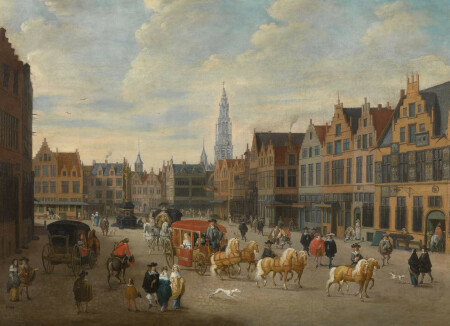Ortelius in 2022: online mapping of heritage communities
Do you know Abraham Ortelius? This cartographer from Antwerp collected maps and published the first modern atlas of the world in the 16th century. In 2022, we’re supporting a similar digital experiment by ErfgoedLab Antwerp (link in Dutch) and automatically skimming Facebook groups to identify online heritage communities in Antwerp.
Challenge
Facebook has lots of groups of local residents helping each other, including to promote local cultures and look back nostalgically at the past. There are plenty of active groups in and around Antwerp, for example for fans of Rubens who want to share their passion for the artist, or proud ‘sinjooren’ – as people from Antwerp are known colloquially – highlighting their local dialect. The question is: can these online groups and forums also be called heritage communities? What are the similarities? What dynamics play a part? And how does the online world relate to the physical one? In an initiative by ErfgoedLab Antwerp, we’re trying to gain deeper insights into this, with the project also serving as a test to check whether heritage societies will also be able to use this workflow moving forward.
Our role
We’re offering our expertise to support this ErfgoedLab Antwerp project. Specifically, we’re providing feedback on the project plan, helping to think about its implementation, and looking for a suitable technical partner. This overlaps somewhat with our social media archiving project.
Approach
Step 1: what groups are there?
In the first phase, ErfgoedLab Antwerp went in search of relevant Facebook groups. Technical partner Datable (link in Dutch) developed an application based on a Google Search and Facebook API to help with this. In order to collate these groups:
Step 2: what happens in these groups?
In a second phase, ErfgoedLab delved a bit deeper and interviewed several key people from a limited number of groups, with the aim of finding out what happens in them, what they are used for, how they breathe life into digital heritage, what the benefits and drawbacks of these forums are, and how they relate to the physical world. You can check out the results on CEST (link in Dutch).



